Preschoolers need loads of writing practice but not necessarily in the traditional pencil-paper fashion. This post is dedicated to what writing practice in preschool looks like and how preschoolers develop writing skills and build crucial fine motor skills along the way.
Why is Writing Practice Important in Preschool?
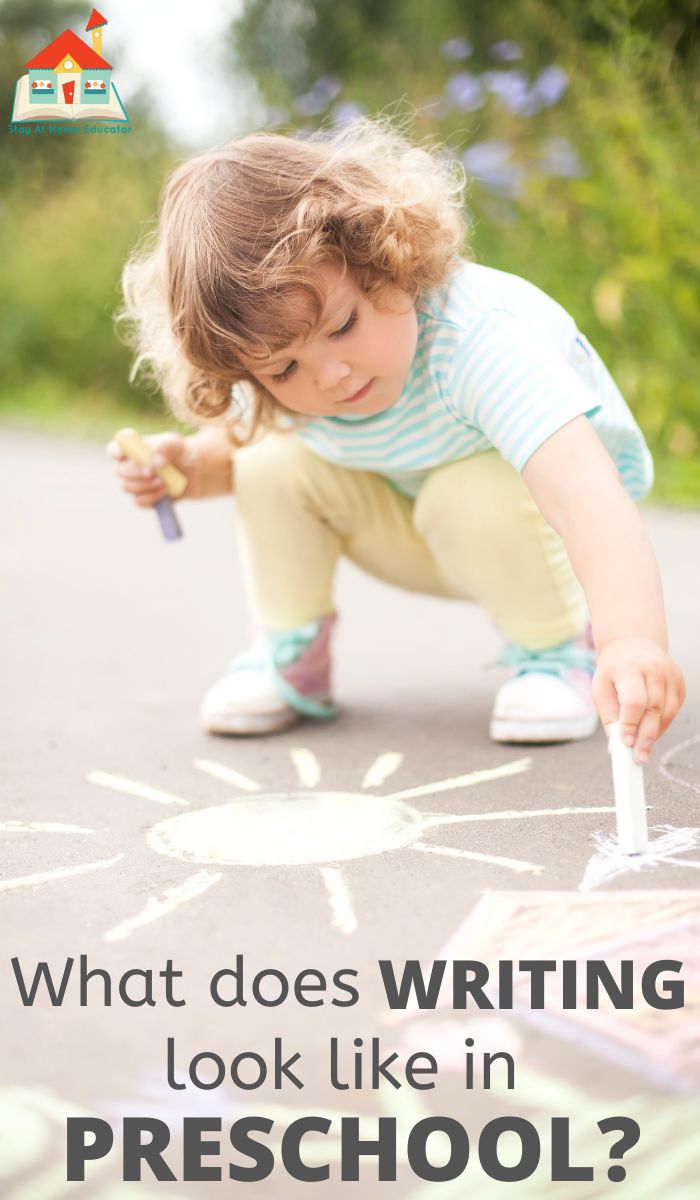
Reading and writing go hand in hand. Writing is an integral part of reading and an equally critical component of overall literacy. Good readers tend to be good writers, and good writers also tend to be good readers.
In fact, a recent study by Laura Dinehart suggests that early writing skills show a link between a preschooler’s development of writing skills and later academic achievement. Dinehart’s study is only one of several that suggest the importance of writing development beginning in the preschool years.
During the preschool years, pre-writing skills should focus on the control of muscles used in writing, such as hand skills, and therefore activities may not look like traditional forms of writing.
-
Product on sale
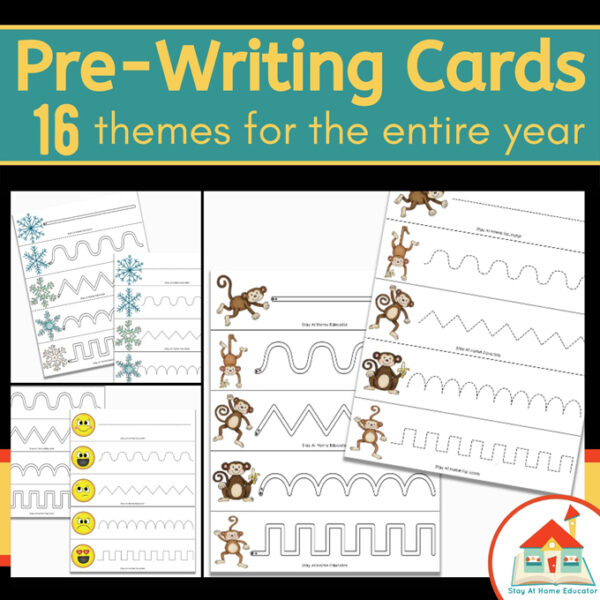 Prewriting Cards for the Entire YearOriginal price was: $16.00.$8.00Current price is: $8.00.
Prewriting Cards for the Entire YearOriginal price was: $16.00.$8.00Current price is: $8.00. -
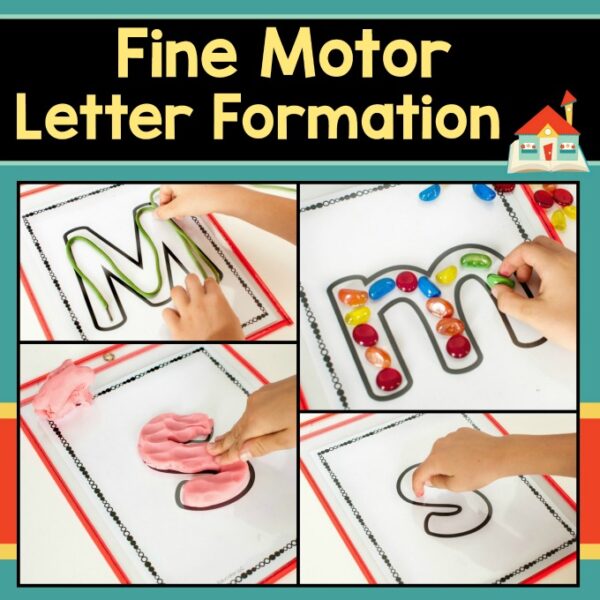 Fine Motor Letter Formation Practice Mats$4.00
Fine Motor Letter Formation Practice Mats$4.00
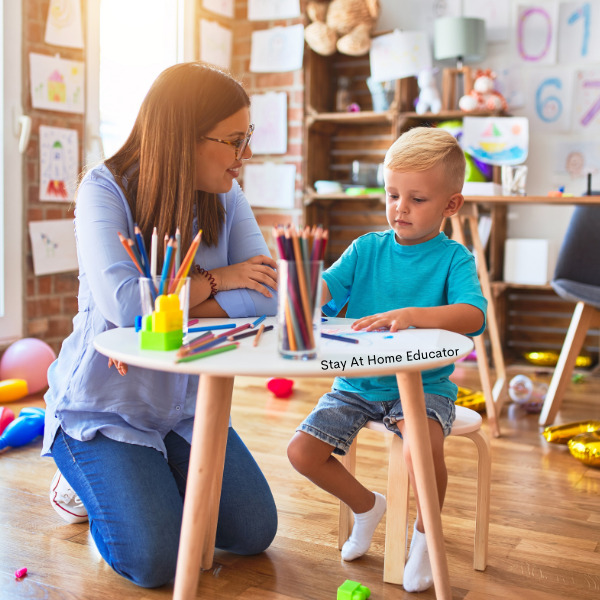
What Does Writing Practice Look Like in Preschool?
Writing practice in preschool should be focused primarily on building hand strength. Writing is a complex and difficult skill that requires a lot of practice and patience, not to mention strong fine motor skills and hand strength.
Hands skills refer to the strength and dexterity in our hands. Both depend on how we use the small muscles in our hands and fingers. However many of the larger muscles of the upper body impact success in writing as well. For example, while holding a pencil properly, the thumb and forefinger carry out the skilled movements needed to write, however, the remaining fingers and large muscles of the forearm provide stability and support. Core strength allows us to steady ourselves so that we can manipulate and control writing objects in a precise manner.
This is why preschool writing practice may not look much like writing at all. That’s because both fine and gross motor skills are necessary to carry out writing tasks.

Activities to Build Writing Skills in Preschool
While your child may not be ready to sit down and write a story, or even their name, there are several things you can do as to encourage writing awareness and the development of early writing skills. This early writing practice is called pre-writing and it sets the stage for the big writing work that will come later in their school career.
Develop Gross Motor Skills–Don’t limit your child to sitting at the table to practice writing. Have her stand at an easel to write, draw, scribble, or tape white butcher paper to the wall or floor to create large murals. Get out the sidewalk chalk, or use the whole hand for painting large letters or pictures. Practice yoga stretches, somersaults, and climbing on the jungle gym at the playground. These gross motor skills help build the needed posture and back muscles for children to sit and attend to writing.
Develop Fine Motor Skills–Provide your child with opportunities for finger use, such as lego building, threading beads or pasta, and using tongs to transfer pom poms, cotton balls, or blocks. Don’t forget about scooping and pouring using water, rice, or beans. Use a piggy bank to slip coins into the slot, or introduce a fine motor activity appropriate for babies. Check out other helpful fine motor activities here.
Develop Hand-Eye Coordination– Playing catch is a great way to develop hand-eye coordination, as well as catching scarves and balloons. Have your child practice coloring or tracing simple shapes. Turn up the music and dance to songs that encourage movement. The Hokey Pokey, Head, Shoulders, Knees and Toes, The Wheels on the Bus, and The Itsy Bitsy Spider, are just a few.
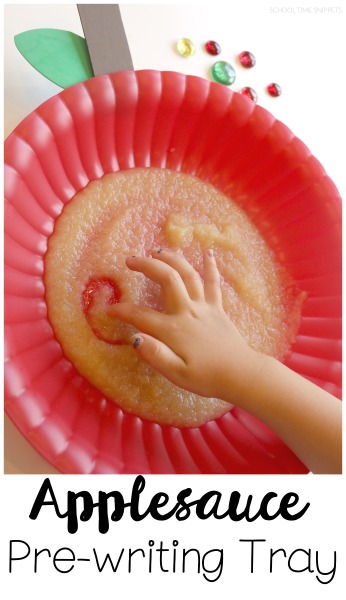
Pre-Writing Practice Ideas for Preschoolers
Preschoolers love using writing supplies from pencils to markers and everything in between. There are so many items that you can use to help your preschooler build crucial pre-writing skills. Everything from playdough to dirt and a stick helps to strengthen the hand muscles to correctly grasp a pencil and become a budding writer.
Writing Activities… No pencil required! -Give your child a shallow basin full of salt and encourage her to use her finger to write in it. Do the same with pudding, shaving cream, or whipped cream. Practice writing letters in the air, or have your child try writing with her feet. Use playdough to make letters or tell stories. Use stickers and magazine cut-outs to encourage your child to tell stories. For a more personal connection get out the photo album and ask your child to tell you the story in their own pictures!
Developmentally Appropriate Journaling – This may seem like an oxymoron but journals have their place in preschool! It’s a great way to keep their progress and amazing writing practice in one place! Using stickers, gluing in torn paper, coloring, stamping, drawing, and scribbling all make journal “writing” so much fun!
Engage in Art Activities – Not only are art activities loads of fun for preschoolers, art activities are also pre-writing activities too! Holding the paintbrush, dotting the q-tips into paint, coloring in a picture with markers or crayons, squeezing glue, all prepare little hands for writing success!
-
Product on sale
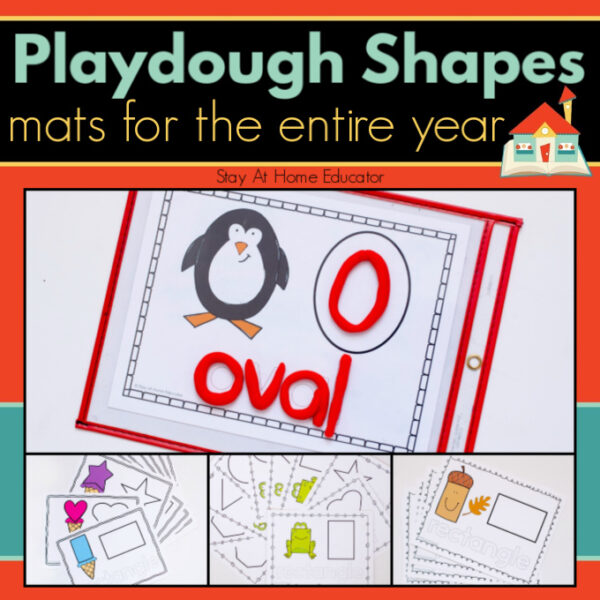 Playdough Shape Mats for the Entire YearOriginal price was: $12.00.$8.00Current price is: $8.00.
Playdough Shape Mats for the Entire YearOriginal price was: $12.00.$8.00Current price is: $8.00. -
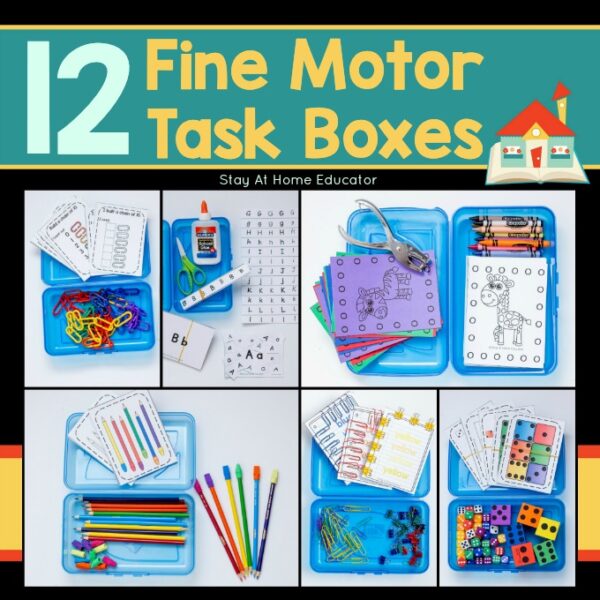 12 Fine Motor Task Boxes$10.00
12 Fine Motor Task Boxes$10.00
Provide Sensory Play – Sensory activities inherently build fine motor skills. Wringing out sponges in water, scooping rice, rolling playdough, and using tongs, all help children develop their fine motor skills as they play.
Above all, make sure your child is having fun while learning the skills needed for writing and getting daily opportunities to practice pre-writing skills.
Hand-Selected Materials to Build Fine Motor Skills
These are some of my top picks to help build hand strength and dexterity through the use of play. Take a look at some of these great ways to build the muscles in the hand needed for writing and drawing!
Related Reading

I’m Sarah, an educator turned stay-at-home-mama of five! I’m the owner and creator of Stay At Home Educator, a website about intentional teaching and purposeful learning in the early childhood years. I’ve taught a range of levels, from preschool to college and a little bit of everything in between. Right now my focus is teaching my children and running a preschool from my home. Credentials include: Bachelors in Art, Masters in Curriculum and Instruction.

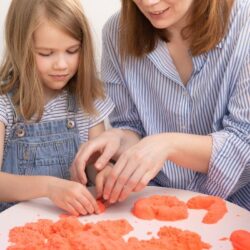
Laura Dinehart’s study is my leading resource when I present to educational staff and parents about the importance of the mastery of handwriting skills. This article is going to be on that same list, as well. It is very well organized and offers just the right amount of information to start the thinking process on the need to develop fine/gross motor skills in preschoolers – not the direct instruction on handwriting (pencil and paper). Thanks so much for sharing this and I will do the same.
Such a wonderful list of pre-writing activities for preschool. Thank you for sharing at the Sunday Showcase! 🙂
This is Excellent!!
Laura Dinehart’s study is fascinating. I love the pre-writing activities you have highlighted here – it’s so easy to forget that sometimes skills are best built activities that aren’t, on the surface, directly related.